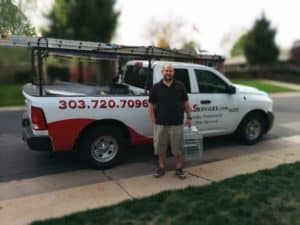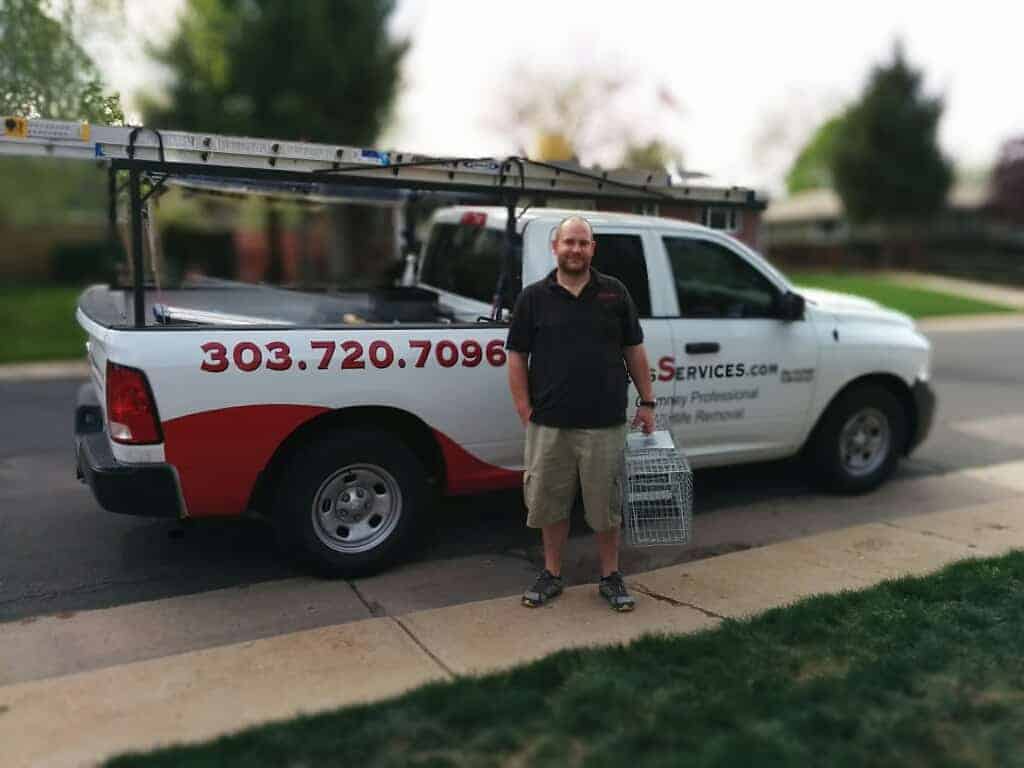Raccoons can be quite a nuisance this time of year!
Raccoon’s and their offspring can be a particular menace this time of year throughout the Colorado area.they can cause significant damage to your home if left unresolved.
The original habit of raccoon’s is dense forest. Urban sprawl has forced them into the city and more populated area, including your chimney and attic. Raccoon’s are known for their extremely dexterous front paws used to cause property damage. They have babies during the spring which usually consist of two to five young called “kits”. They babies generally stay with the mother for about 5-8 months.
Your attic is perfect!
Raccoon’s are looking for a safe sheltered place to nest and have their babies away from other predators. Your attic or chimney make the perfect area for this.
For raccoon’s in the attic we determine the point of entry as they need at least a 2” – 4” hole to get in. They have a collapsible spine so the hole may be smaller than you might think. We then try to find out if there are babies present or not. Babies generally make a purring sound when disturbed with a loud noise. If babies are not present we set traps and relocate the animal. Once relocated we repair any damage to the entry point and seal the hole. The most common point of entry is where the soffit (the horizontal surface between the eaves and your siding) meets the roof as the animal gets up under there and uses leverage to break open a hole directly into the attic. We also check for any other potential entry points and recommend sealing those as well. Then we sanitize your attic using a fog machine and product called Sterifab. This kills any fleas and mites that the raccoon’s might have been carrying as well as any bacteria in the feces. If there are babies present I put eviction fluid on a tennis ball and toss it into the attic. Eviction fluid is made from male raccoon feces. This works because the mother raccoon will not mate until the kits have left. Therefore a male raccoon will kill the babies to force the mother into mating. We generally love eviction fluid as the mother will take her babies and move the nest someplace else. This is the preferred method for removing babies for all involved. However, Eviction fluid only works on females and only 90% of the time. In those case where it does not work I trap the mother and remove the babies by hand and try to release them all together in another location. Then we repair any damage, seal the entry point, and then sanitize and deodorize the attic space.

Your chimney is an open invitation!
For raccoon in the chimney the entry point is normally an uncapped chimney. They climb down the clay or brick flue and nest on the smoke shelf. The smoke shelf is the sunken flat area behind the damper that they love to nest on. If there are no babies we put a trap on the roof or near the chimney. Relocate the animal or animals and install a chimney cap to prevent this from reoccurring. If there are babies we start as we did before with eviction fluid covering a tennis ball and insert it on the smoke shelf. Usually, the mother will take her babies and move to another location far away from the threatening scent. If this doesn’t get the mother moving I will set a trap for the her. Once the female raccoon is safely in the trap i can remove the babies by hand. This may take some time if the the smoke shelf is hard to access or is considerably lower than the damper itself. I then take the trapped female and the babies together release them in another location. The young raccoon’s are put in a cardboard box and, once released the mother will usually locate them. There is always the chance that the mother will abandon them which we try to avoid. When the mother raccoon and babies are relocated I assess the chimney for damages and make the necessary repairs. Then we install a full chimney or flue cap to keep the critters out for good.
A masonry chimney is not required to have a cap of any kind. Although I am a HUGE fan of installing a chimney cap as it keeps out raccoon’s, squirrels, and birds. It also can prevent serious water deterioration of the mortar crown, flue, and even the fireplace itself.
Raccoon’s and the young can make quite the mess out of your chimney, but it all would’ve been prevented by installing a simple chimney cap in the first place…
